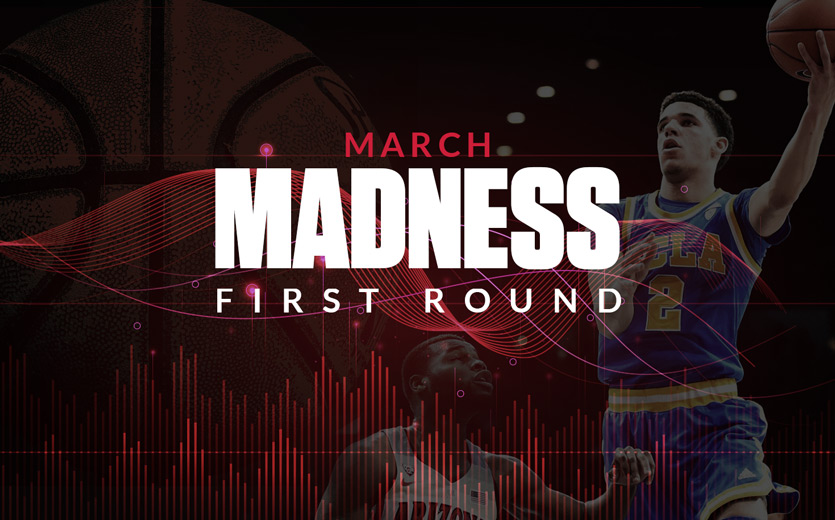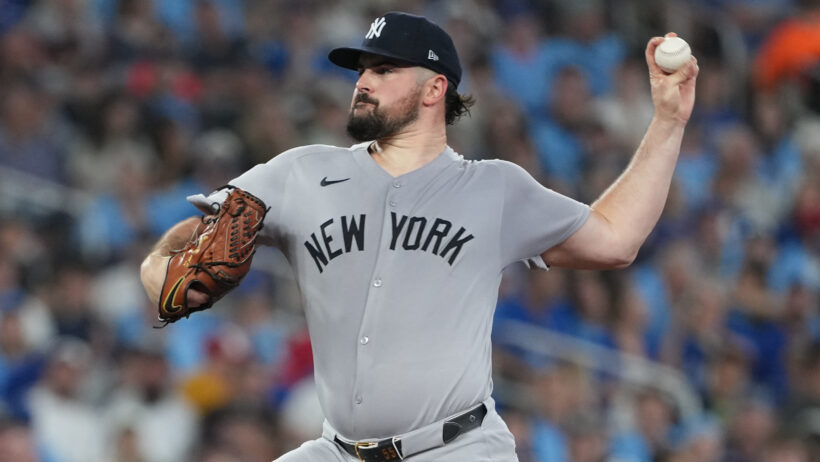The 11 March Madness Betting First-Round Trends You Need to Know
By Sascha Paruk
Updated:

- Is there really as much mayhem in March Madness as the media portrays?
- Which seeds are the best bet to overachieve?
- Which schools just cannot buy a win in the NCAA Tournament?
Any experienced NCAAB bettor knows March Madness’ reputation for upsets, buzzer-beaters, and more havoc than a Shaka Smart defense on amphetamines. But is there really as much chaos to the tournament as there appears, or are have we all fallen victim to YouTube bias?
- BETMGM SPORTSBOOK
USE CODE SBD1500 & GET $1,500 BACK IN BONUS BETS
- BET365 SPORTSBOOK
BET $5 & GET $150 IN BONUS BETS WITH CODE DIME365
- FANATICS SPORTSBOOK
BET & GET UP TO $1,000 IN BONUS BETS!
- DRAFTKINGS SPORTSBOOK
BET $5 & GET $150 IN BONUS BETS INSTANTLY!
- FANDUEL SPORTSBOOK
BET $5 & GET $150 IF YOUR BET WINS
- CAESARS SPORTSBOOK
USE CODE SBD2DYW & BET $1 TO DOUBLE THE WINNINGS ON YOUR FIRST 10 BETS!
Must be 21+. GAMBLING PROBLEM? Call 1-800-GAMBLER (CO, IL, KS, KY, MD, MI, NC, NJ, OH, PA, TN, VA, VT, WV, WY); (800) 327-5050 or gamblinghelplinema.org (MA); (877) 8-HOPENY (NY); 1-800-NEXT-STEP (AZ); (888) 789-7777 (CT); 1-800-BETS-OFF (IA); 1-800-9-WITH-IT (IN); mdgamblinghelp.org (MD); morethanagame.nc.gov (NC); 1800gambler.net (WV)
March Madness Betting Trends
Even though you’ve watched the highlights of #15 Lehigh beating #2 Duke 35 times, it still only happened once.
To get a more accurate sense of how the first weekend of March Madness tends to play out, eschew the videos and look to the trends. Below are 11 of the best, strangest, and most-bankable trends for the first two rounds of the NCAA Tournament.
1. Only two #1 seeds have ever lost in the first round
We will get to stats you haven’t already heard a thousand times in short order, but every March Madness trends article has to start here. In 2018, when #16 UMBC beat #1 Virginia, it was the first time a #1 seed had ever lost in the first round.
But it happened again in 2023 when #16 Fairleigh Dickinson shocked Zach Edey and #1 Purdue (63-58).
Prior to that, only two #16 seeds had ever lost by less than a bucket:
Top seeds are now 150-2 against #16 seeds.
2. The #1 seeds win at least two games 86% of the time
After feasting on lowly #16 seeds, the top dogs still have room for dessert: #1 seeds are 128-22 (85.3% win-rate) in the second round since 1985. That’s significantly better than #2 seeds, which are just 95-46 (67.4% win-rate).
3. The #1 seeds cover the spread if it’s less than 20 points
After the 2023 tournament, #1 seeds are 8-3 ATS in their last 10 games against #16 seeds when the point spread is less than 20.
4. The #7 seeds crush the #10 seeds
That’s overstating it a bit, but given the NCAA Tournament’s reputation for upsets, a lot of amateur bracketologists assume that the #7-vs-#10 matchups are basically toss-ups, and that’s not the least bit true. The #7 seeds have won at a 60.9% clip and are 92-59 all-time.
5. But the #10 seeds have staying power
[When #10 seeds] survive the Round of 64, they’re batting nearly 42.9% in the Round of 32.
The history of #10 seeds in the first round isn’t great (see above). Yet, when they do survive the Round of 64, they’re batting 41.6% in the Round of 32, going 25-35 all-time. If there’s a #10 seed you love in the first round, take a hard look at their matchup in the second round and don’t assume they’ll be one-and-done.
6. The First Four are primed for more
Since the tournament expanded to 68 teams and implemented the “First Four” (2011), one of the teams to advance from that preliminary section of the bracket won a Round of 64, as well, until 2019. Both Belmont and Arizona State were eliminated in the Round of 64.
UCLA restarted the tradition in 2021, going from the First Four all the way to the Final Four before being eliminated by Gonzaga on a buzzer beater. Notre Dame made it two years in a row in 2022, routing #6 Alabama as a #11 seed after beating Rutgers in double overtime in the First Four. Pitt did so again in 2023 as a #11 seed, beating #6 Iowa State, while #16 Fairleigh Dickinson was also in the First Four before stunning #1 Purdue.
7. The #9 seeds are one-hit wonders
The #8 vs #9 games are true coin-flips (76-72 in favor of the #9 seeds since 1985), and the selection committee has long said that the eight teams grouped in the #8-9 range are treated as equals. That makes the discrepancy in their second-round success really strange: #8 seeds are 16-57 (21.9% win-rate), while #9 seeds are an atrocious 8-70 (10.3% win-rate).
8. Underdogs have covered 32 of the last 56 games between #8 & #9 seeds.
Again, #8 and #9 seeds are almost in a dead-heat over the last 33 years, and the parity has translated to the betting realm. Taking the points has been the wise move 57.1% of the time over the last 14 tournaments.
9. The #11 seeds are first-round phenoms
Going back to the 2011 tournament, #11 seeds are .500 against #6 seeds in the first round, going 26-26 in that span. In the 2017 tournament, Xavier, USC, and Rhode Island all won as #11 seeds, and Xavier advanced all the way to the Elite Eight.
Going back to the 2011 tournament, #11 seeds are … 20-20 [against #6 seeds].
In 2019, both #11 Syracuse and #11 Loyola-Chicago won multiple games. Syracuse and UCLA did the same in 2021.
In the 2022 edition, Notre Dame, Michigan, and Iowa State all won their first-round matchups as #11s, with Michigan and Iowa State advancing to the Sweet 16.
The #6 seeds answered back in 2023, with Creighton, Kentucky, and TCU all winning. Only Pitt managed to advance as a #11.
10. The #13 line is the parity cut-off
Every year, talking-heads (and, to some extent, computer algorithms) detail the increased parity in the college game. It’s also well documented that #12 seeds (53-99 all-time; 34.9% win-rate) are almost as good as #11 seeds (58-94 all-time; 38.2% win-rate) in the Round of 64 historically.
When you get to #13 seeds, though, David runs out of rocks and Goliath pulverizes the word parity between his heartless hands. The #13 seeds are a dismal 32-120 (22.1% win-rate) in the Round of 64.
11. Some teams just can’t get off the schneid

Neither Boise State (0-9), Nebraska (0-7), Belmont (0-8), nor Eastern Kentucky (0-8) has ever won a tournament game.
Contrast that with perennial mid-major power Gonzaga, which is 14-0 in the Round of 64 since 2009.
Looking for More March Madness Trend Analysis?
If you want to take your March Madness bets to the next level, you’ve come to the right place. Once the first round is in the rear-view mirror, check out our guide to perennial betting trends in the Sweet 16 and the Elite 8, as well as the 7 key attributes of March Madness winners.
If you’re in the market for sports betting strategy that you can apply to whichever sports you elect to bet on, we’ve got you covered as well. Get out there and grow your bankroll!

Managing Editor
Sascha has been working in the sports-betting industry since 2014, and quickly paired his strong writing skills with a burgeoning knowledge of probability and statistics. He holds an undergraduate degree in linguistics and a Juris Doctor from the University of British Columbia.




